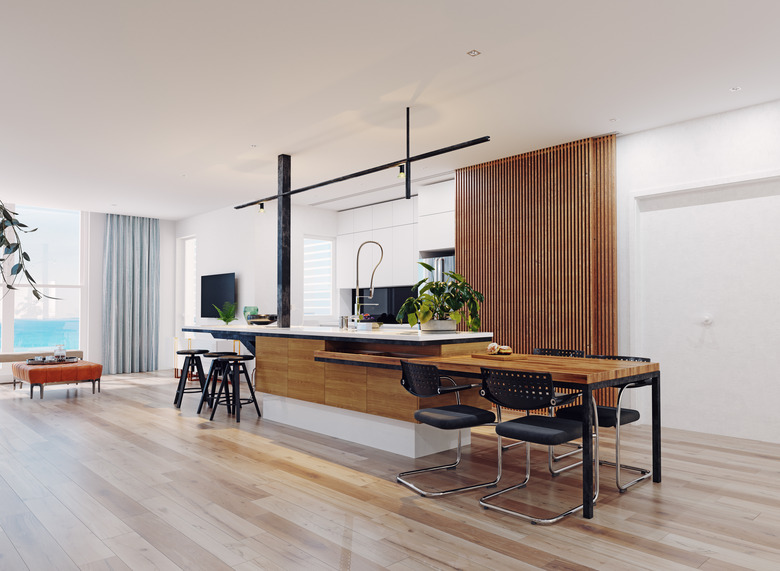How To Repair Scratches In An Engineered Hardwood Floor
While engineered hardwood floors are more durable than traditional wood floors, they may still get scratched. You'll most likely see scratches in high traffic areas, such as the entryway, or in homes with young children and pets. To keep your floors looking new and lasting for decades, you'll periodically need to invest some time in engineered hardwood scratch repair.
Unlike laminates, you can sand engineered hardwood to remove scratches, but it's usually more trouble than its worth, and there is a small chance you could sand through the veneer. A better way is to buy a wax-based repair kit, which can be found in hardware and home improvement stores. Waxes are available as a stick that looks like a crayon, marker or block. When purchasing a kit, look carefully at the colors and shades to make sure you choose one that matches your floor. Many kits will offer a variety of shades so you can create a blend to perfectly match your floors. You'll also need:
- Rubbing
alcohol - Cotton swabs
- Clean
washcloths - Plastic
putty knife - Varnish
or polyurethane - Natural
bristle brush or lamb's wool applicator
Prep the Surface
Prep
the Surface
For scratches near furniture or rugs, move those items out of the way to avoid damage. If you're repairing several scratches in different areas at the same time, grab some painter's tape and mark each spot so you don't forget where they are.
Clean each area before you apply the wax. Begin by sweeping the entire floor, paying careful attention to the damaged areas to get all of the dust out of the scratches. Then, dip a cotton swab in rubbing alcohol and carefully rub it over the scratches to remove any leftover debris. Finally, clean the area around the scratch with a clean washcloth that has been lightly dipped in rubbing alcohol.
Covering Scratches on Engineered Wood Floors
Covering Scratches on Engineered
Wood Floors
When you're ready to fix scratches on engineered hardwood floors, follow the directions on your floor wax repair kit. Carefully blend the colors, and before you begin to repair the scratches, hold a sample of the wax next to the floor to make sure they match.
Once you have an exact match, put a small amount of the wax on your plastic putty knife. Push the wax into the scratch and press down at a diagonal angle until you've filled the scratch. Use the flat end of the knife to remove any extra wax on the floor. The wax should be level with the rest of your floor.
Clean and Seal
Clean
and Seal
Use a clean cotton cloth and lightly wipe the floor to clean it after you repair any scratches. Take care to not press too hard as the goal is to remove extra wax from the floor while the wax in your newly-repaired scratch remains intact. If needed, use fine-grit sandpaper to gently buff the area.
To protect the area, seal it with varnish or polyurethane. It's best to use a natural bristle brush or a lamb's wool applicator so air bubbles don't develop.
Alternative Options
Alternative Options
If your scratch is very light, you may be able to use fine steel wool to minimize the scratch. To do this, gently rub the scratch in the direction of the wood grain until it's not as visible. Make sure to seal the area after you're done.
If you've repaired scratches several times and it shows, you may want to stain your engineered hardwood floors. Not only will this help blend the scratches and give your floors a more uniform look, but it will also seal the wax you've previously applied.
